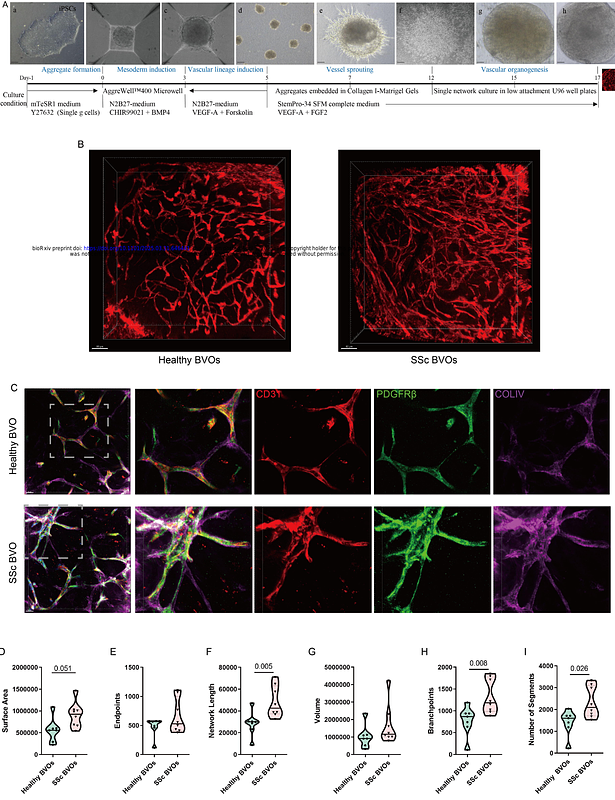Human blood vessel organoids recapitulate key mechanisms of transition from vasculopathy to fibrosis in systemic sclerosis

Human blood vessel organoids recapitulate key mechanisms of transition from vasculopathy to fibrosis in systemic sclerosis
Xiao, Y.; Hong, X.; Zhi, L.; Li, Y. N.; Regensburger, M.; Marxreiter, F.; Gorg, B.; Koziel, S.; Gyorfi, A. H.; Filla, T.; Bruch, P. M.; Tripal, P.; Adjaye, J.; Dietrich, S.; Winkler, J.; Distler, J. H. W.; Matei, A. E.
AbstractSystemic sclerosis (SSc) is an autoimmune disease that transitions from vasculopathy as an initiating pathogenic event to tissue fibrosis. The mechanisms of these transitions remain, however, poorly understood, mainly because complex multicellular human models of SSc vasculopathy are lacking. Here we characterized blood vessel organoids (BVOs) as a novel model system of vasculopathy in SSc. We demonstrate that exposure of SSc-BVOs to SSc serum triggers changes on epigenetic, mRNA and protein levels and recapitulates key pathogenic features of SSc vasculopathy, with shifts from angiogenic endothelial cell subsets to those undergoing endothelial-to-mesenchymal transition, loss of endothelial cells-pericytes interactions and profound angiogenic defects. The genetic predisposition of SSc donors and serum IgGs are required for the deleterious effects of SSc serum. We further validate SSc-BVOs as a human model system to evaluate candidate therapies targeting SSc microvasculopathy and use this system to provide evidence that {gamma}-secretase inhibition is a potential therapeutic approach.